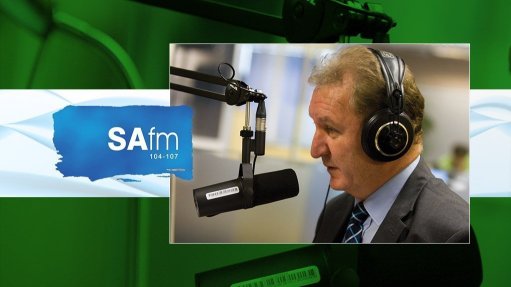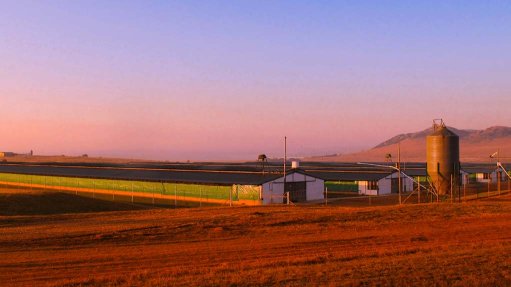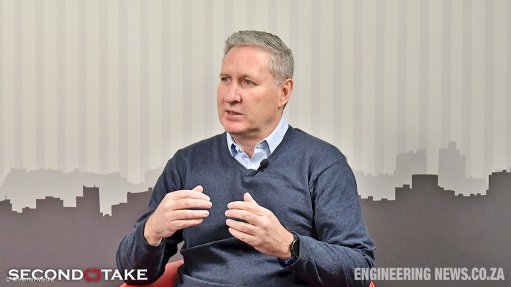SAA must look to Ethiopian Airlines
Late last month, the top brass at South African Airways (SAA) was in the National Assembly, briefing Parliamentarians about the perennial ills at the national carrier.
New CEO Vuyani Jarana, who, together with board chairperson Johannes Magwaza, led the delegation, painted a rather depressing picture of the state of affairs at the State-owned airline: a debilitating critical skills dearth, poor revenue management and difficulty in obtaining credit and selling tickets in the face of mounting negative sentiment by financiers and the public alike.
As is reported elsewhere in this edition, just days later, Jarana and his team were in the public spotlight once again, this time announcing a R5.6-billion loss for the 2016/17 financial year at a media briefing. The airline, which is in debt to the tune of R10-billion and has been the recipient of multiple government bail-outs over many years, is projected to post a negative cash flow of about R10-billion in 2020, with the figure expected to decline to R7.3-billion in 2023.
Because it has guzzled billions of rands in taxpayers’ money, many commentators have urged government to dispose of SAA, contending that the days when its finances were on an even keel are gone forever. In recent times, the most vocal critics have been Mmusi Maimaine, leader of the opposition Democratic Alliance, and the suits at the Free Market Foundation.
The subtext seems to be that, as long as SAA remains a parastatal, it will never operate profitably. And I disagree. Quite strongly. State-owned airlines can actually generate revenues for their shareholders, namely governments. There is a good example in Africa – Ethiopian Airlines, the most successful and fastest-growing airline on the continent. For the fifth consecutive year, it was more profitable than any of its African peers in 2017 and indications are that it will maintain the status quo well into the future.
As an indication of its financial health, Ethiopian Airlines has, over the past few years, placed big orders with aircraft manufacturers Boeing and Airbus for more than 50 next-generation airliners like the Boeing 787 Dreamliner and the Airbus A350. The acquisition of these ultra-long-range aircraft is also indicative of the airline’s desire to play a bigger role in international markets.
One of the keys to the success of the airline – which started operations in 1946 – is the realisation by successive Ethiopian governments that autonomy was of the utmost importance if the airline was to be the goose that lays the golden eggs. This was the case even during the country’s failed experiment with communism in the 1970s, when Mengistu Haile Mariam was in charge.
Unfortunately, this wisdom was not shared by political leaders in many countries across Africa. As a result, the once high-flying Nigerian Airways and many other national carriers – such as Air Djibouti, Benin Airlines, Botswana Airlines, Congo Airlines, Cote d’Ivoire’s Air Afrique, Ghana Airways, Gambia Airlines and Zambia Airlines – are now but distant memories.
Left to their own devices, the successive management teams at Ethiopian Airlines have used a mix of strategic investments and partnerships, the acquisition of smaller, struggling rivals and efficient service delivery to ensure that the airline becomes the titan of Africa’s skies.
On the acquisition front, the airline announced in January that it had bought a 45% stake in the defunct Zambia Airways, which it hopes to revive.
The Ethiopian flag carrier already manages the formerly State-owned Air Malawi Airlines – which has been rebranded as Malawian Airlines – under a deal struck in 2013 that also gave it a 49% shareholding. It also runs Togo’s ASKY Airlines, in which it has a 40% interest.
In light of the successes that Ethiopian Airlines has notched up over the years, I believe that, with a competent management team in place, and should the correct strategies be implemented, SAA will eventually cease to be the black hole that it is today. So, all stakeholders must support current efforts to turn the airline around. More importantly, government must afford Jarana and Co the same level of autonomy that is enjoyed by their counterparts at Ethiopian Airlines.
Comments
Press Office
Announcements
What's On
Subscribe to improve your user experience...
Option 1 (equivalent of R125 a month):
Receive a weekly copy of Creamer Media's Engineering News & Mining Weekly magazine
(print copy for those in South Africa and e-magazine for those outside of South Africa)
Receive daily email newsletters
Access to full search results
Access archive of magazine back copies
Access to Projects in Progress
Access to ONE Research Report of your choice in PDF format
Option 2 (equivalent of R375 a month):
All benefits from Option 1
PLUS
Access to Creamer Media's Research Channel Africa for ALL Research Reports, in PDF format, on various industrial and mining sectors
including Electricity; Water; Energy Transition; Hydrogen; Roads, Rail and Ports; Coal; Gold; Platinum; Battery Metals; etc.
Already a subscriber?
Forgotten your password?
Receive weekly copy of Creamer Media's Engineering News & Mining Weekly magazine (print copy for those in South Africa and e-magazine for those outside of South Africa)
➕
Recieve daily email newsletters
➕
Access to full search results
➕
Access archive of magazine back copies
➕
Access to Projects in Progress
➕
Access to ONE Research Report of your choice in PDF format
RESEARCH CHANNEL AFRICA
R4500 (equivalent of R375 a month)
SUBSCRIBEAll benefits from Option 1
➕
Access to Creamer Media's Research Channel Africa for ALL Research Reports on various industrial and mining sectors, in PDF format, including on:
Electricity
➕
Water
➕
Energy Transition
➕
Hydrogen
➕
Roads, Rail and Ports
➕
Coal
➕
Gold
➕
Platinum
➕
Battery Metals
➕
etc.
Receive all benefits from Option 1 or Option 2 delivered to numerous people at your company
➕
Multiple User names and Passwords for simultaneous log-ins
➕
Intranet integration access to all in your organisation


















